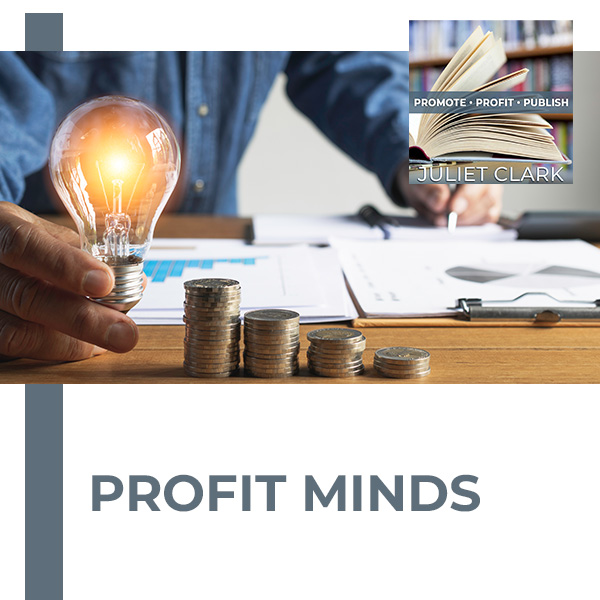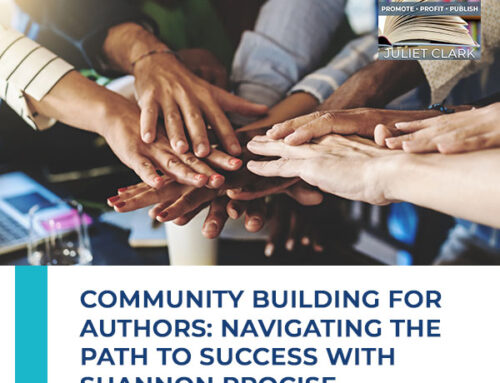
Do you own your business, or does it own you? You didn’t get into business to get a glorified job, which most entrepreneurs have. Today, Steve Kirch, the creator of Profit Minds, discusses how entrepreneurs can enhance profit, accelerate productivity, and build robust business processes for scale. Do you want to know what it takes to have a profitable mind? Tune in and start focusing on what matters to drive business improvements.
—
Watch the episode here
Listen to the podcast here
Profit Minds
Before we get started, I want to remind you to go over and check out Author Traffic School. If you want to build a platform that launches your book in a way that serves you and your audience, you can go over and check out our courses at www.AuthorTrafficSchool.com. If you haven’t subscribed to Breakthrough Author Magazine, go on over and do that as well. BreakthroughAuthorMagazine.com. We also have a little quiz attached so you can see where your skillset is truly at.
Our guest is a former client of mine. Steve Kirch is a PhD and the Creator of Profit Minds Growth System, and he’s a Managing Partner at Profit Minds LLC. After many years as a successful manager and leader in high tech, Dr. Steven Kirch now focuses on his passion for people, processes, and organizations to help entrepreneurs and CEOs take their businesses to the next level. The Profit Minds Growth System is a unique blend of enhancing profit, accelerating productivity, and building robust business processes for scale, all with the goal of helping his clients scale their businesses and live the life they imagined when they began.
Having honed his skills during his three decades at IBM and Intel, two of the most process-driven firms in the world, he developed his own Business Operating System for scale called BOS and has implemented this system into more than twenty organizations. The Catapult Razor program takes this process to the next level and enables the creation of world-class companies with its AI-driven KPIs and rhythm of implementation. This allows the leader to focus on what matters and to drive business improvements. In addition, Steve serves on the board of directors for the Gratitude Network, a leadership development organization, which works with social entrepreneurs around the world to enable the growth of these innovative companies that are changing the lives of children and youth everywhere.
Dr. Kirch also has a passion for music. He sings with the San Francisco Bass Cappella Chorus, The Fog City Singers. He has appeared on stage in local theater and company productions. When not busy with music, you can find him on his bicycle at the golf course. He’s been married to his wife, Donna, for many years, and they have two wonderfully intelligent and talented daughters who are making their way in the world. Steve has a lot to say as we move into a recession. People like Steve and what he does with Profit Minds is very important to keep your business alive during a downturn. Stay tuned.
—
Steve, I’m excited to have you back. It’s been a couple of years since you were on.
It’s been a while and much has changed in the world. I’m happy to be back. I’m happy to be talking about helping small businesses grow.
As promised in the intro, we’re moving into a more recessionary period, and your business is going to be necessary for people to hold steady and eke out a bit of growth. Can you talk about that because you’ve been through these downturns before?
I have. I’ve done it in the corporate setting and as an entrepreneur. The tendency is to be scared. The future is always uncertain. We are never guaranteed. One of my favorite quotes is, “The stock market has predicted 15 of the last 10 recessions.”
I was thinking, “My plan, God laughs.”
There is that too. The tendency is to be fearful in this environment. There are two choices. You can curl up into a ball, retrench, and say, “I’m afraid to spend anything. I’m afraid to invest in my company because it might not work.” Even in good times, that’s possible that it might not work but in bad times, if you take advantage of the slowing economy. I’m not going to debate whether or not it’s going to be a recession or not and whether it’s officially a recession. It doesn’t matter.
People feel like things are not going to be great in the future. If you react to that by pulling back and refusing to invest, you are going to go where the economy goes. Historically, if you look, great companies come out of these times of adversity. In part because you’re set up for success in times of adversity. When things turn around, I don’t think there’s any debate about if things will turn around.
People feel things are not going to be great in the future. If you react to that by pulling back and refusing to invest, you will go where the economy goes. Share on XThe US economy always rebounds and everybody’s confident that at some point whether it’s 3 months, 6 months, or a year from now, the trajectory will be better and you’ll be poised to take advantage of that. Juliet, as you correctly pointed out, “You may even eke out a bit again as everybody else is retrenching.” This is the time that you need to invest in your business.
When we say this is the time, it’s now before it happens. I did that back when we had the recession in real estate several years ago. I pivoted into foreclosures before they even hit the market. When everybody else was living in their car, I was getting 3 or 4 listings a week from the asset management company. I’m saying that because now is the time to think about, “I know this is coming. How will I pivot?”
What are those opportunities? Every small business owner that I know has many more ideas than they’re capable of executing. Which shiny object are you going to chase? I’m not advocating that but think about what’s the opportunity and where’s the lever? What’s the thing that you can do? Maybe it doesn’t require a huge investment. One of those exercises that are interesting to do is when you’re thinking about, “I want to grow in this way.”
What would you do if there were no constraints? Time, money, resource, and some of those things brainstorm with yourself or with your team if you have one. What would I do if I didn’t have these constraints? Maybe some of those constraints that you put on are artificial. Some of those things that you’re thinking aren’t constraints because there’s a clever way that you hadn’t thought of yet of working around it. One of your team can come up with, “We’ve been working this way for a while and it hasn’t worked. We drop that and reinvest this other way.” There are lots of options if you stay open, but if you go into that survival brain, your executive function disappears.
It does. I do remember in the last downturn, I had a real estate coach, and the one thing they did to eliminate a lot of the fear was to stop watching the news.
That’s a great one.
Stop watching the news because the news gets paid for those clicks. They get paid to put sheer terror and fear into you.
If you can’t give it up completely, say, “I’m only going to look once a week.” I stay up with what’s going on in the world because I don’t like to be isolated either but looking at the news first thing in the morning when you get up, that’s a recipe for disaster because it sets your whole day. They’re there to sensationalize and to put the most negative spin on stuff. Stay away from the news. Stay away from your email too but that’s a different problem. First thing in the morning, I recommend to all of my clients, do not to look at your email first thing. The reason for that is that now you’re working on somebody else’s priorities.
I’m one of those. I’m up at my desk at usually 4:30 or 5:00 so I can answer and get out before they even get up.
I’ll tell you a story about the last year that I was working at Intel. I realized that my call biological prime time the time that I’m most creative and most able to do stuff was the time that I first got to work early in the morning. Before people would bother me because most of my team didn’t arrive until 9:00, 9:30, or maybe even 10:00. They would work until late. I got in at 7:00, 7:30 or 8:00 after I arrived, I went to the gym, worked out and came to my desk I was spending the first couple of hours working on my email and I realized, “That’s not the most creative thing or most strategic thinking that I need to do for my organization.”
I told my boss, peers, and team. I had 40 people working for me at that point in time. There were 20 of us in Santa Clara and the other 20 were in Costa Rica. I told them, “I’m not going to look at my email until 10:30 or 11:00 in the morning. If you have something that needs my attention, it has to happen before that time. If you want to send me an email, don’t send me the email, call me or text me. I’ll respond and look at it.” In the last year I was working at Intel, do you know how many times that happened?
How many times?
Once. I knocked it out of the park last year. I was doing those things that I needed to do for my job as opposed to what other people wanted me to do. I blocked off a couple of those mornings with no meetings. I refused to take meetings in those spots so that I had that dedicated time. By the way, that one time that one manager asked me to look at something, it probably could have waited but I honored his request. People are not sitting at their computers waiting for you to respond.
That’s the problem. I put it away so I can’t hold it up because I was trying to be responsible. It’s the same thing with your phone. This is a great point. When I knock off for the afternoon, I maybe look 1 or 2 but I don’t stay attached to that phone, I feel like I need to answer that email. Most of our audience are authors, coaches and speakers. As a publishing company, it is easy for me to establish and work with KPIs. Can you explain KPIs and how you see them coaching can do a better job managing and understanding where they’re at?
KPIs are critical. I spent 30 years in corporate. I’m old enough to have been an entrepreneur for a long time and have 30 years in corporate.
So am I. This is now the old folks, the senior citizen show.
Both of those companies paid attention to the measurements. They’re very process driven so I learned a lot. Since then, I’ve helped my clients. I have several coaches. I have a CPA. What kind of KPI is there? First of all, what’s important is there are two different measurements of success. There are lead measures and lag measures. Lag measures are the things that you tell if it has been successful at the end of a project, quarter, year, or whatever it is that this is the measure of success when we’re done. How will we know if we were successful?
The leading indicators are the things that you need to turn into KPIs or Key Performance Indicators. They are what you do to get that result. A classic example is people who want to lose weight or control their weight. The lagging measures are usually easier to get your handle on. This is where a lot of your clients and coaches will struggle. The lag measures are the easy step on the scale. That’s what has happened to cause you to weigh what you weigh. Leading indicators have two characteristics.

Profit Minds: The leading indicators are the things that you need to turn into key performance indicators. They are what you do to get that result.
They are predictive of the outcome and they are influenceable. People who are successful at controlling or losing weight look at two things. They measure every day two things, diet and exercise. Both of those things are predictive. If you eat less, you will weigh less. What you eat determines how much you weigh. Not only the number of calories but what kinds of calories. There’s a lot of science around that. The other one is exercise. The more exercise you get, the more steps you take. Whatever it is that you use as your metric of exercise or how many minutes do you do cardio or whatever it is.
That’s also predictive. Both of those things are influenceable. You can decide how much stuff you put in this hole and how often you exercise. Those are the things that will lead you to success. Every successful salesperson knows this. Your boss measures your success by how many sales you make and how many dollars you brought in. Successful salespeople track how many calls they make. It’s what you do on a day-to-day. As a coach, “What do you measure?”
For me, I measure a couple of things. Every week, I look at how many potential closes I have on my calendar. I fit in how many potential new clients do I have on my calendar? If I go a whole week without one, I’m like, “What’s going on here?” I usually aim for 3 to 4 every week. If you don’t have that, you have nothing to close, which means you have no revenue. When we’re talking about that, one of the most difficult things when I first started real estate is you would get in the thick of a deal and you’d be working on that, not realizing that I still needed to be prospecting and bringing in those future deals at the same time. You have to find that balance in there and keep it all going.
I had a client who came to me and he said, “I have a pipeline problem.” I said, “What’s the pipeline problem?” He says, “One month I have 10 prospects, and the next month I have 30. The next month, I only have 10, and then I have 30. It’s cycling like this.” I said, “You don’t have a pipeline problem. What you have is a productivity problem. You’re not working on the right stuff.” When he had 30 prospects, he didn’t have time to do any prospecting so the next month, he had no pipeline.
He got to keep it going a bit every day or every week. One of them is, “How many calls do you have with prospects?” Another one is, “How many conversations are you having with referral partners?” Track that. Do you spend 10 or 15 minutes a day on LinkedIn? No more than that with specific things that you want to do. Don’t get lost in the feeds. Go out onto LinkedIn for 10 or 15 minutes or half an hour a day and respond to all of the stuff that’s coming at you and comment on a couple of posts. You’re out there if LinkedIn is where your people are.
Most of my authors are experts.
What are you doing to build the infrastructure? Are you posting on LinkedIn? Do you have somebody helping you to do that? Do you have to do it yourself? Once a week, I spend an hour or whatever it is to get my LinkedIn stuff ready to go, those kinds of things. Those were all trackable. Another one I would encourage people to do is have an hour of focus time every day. Track that. What are you doing to learn and grow? Don’t say, “This is going to be my hour of focus time.”
At the beginning of the week, figure out what you’re going to do in each of those and make that commitment to yourself but track it. Here’s another one that I’ve recently started doing. I figure out the top three things that I need to do for the day. This is not a new thing for me. At the end of the day, I’m scoring myself as to how well I did on that.
Let me show you guys something here. I do this. I buy one of these every year and I do the same thing. Mine is if I have to take something off this day and put it on the next, I haven’t been as productive as I needed to be.
I don’t worry about the entire list being done because everybody’s list is way too long. It’s the top three and there’s one must-do for now. I score myself on a scale from 1 to 10. The other thing that I do as a part of that practice is celebrating, “What are three things that I did well?” That’s the way I close out my day. I have a gratitude practice in the morning as well, which helps to overcome that by looking at the negative news stuff and getting my head in that grateful space. We have so much to be grateful for, even if it’s a roof over our heads, food in the refrigerator, a nice cup of coffee or tea or whatever it is that you drink.
I have a gratitude practice in the morning as well. I do a 10-10 every morning, which is super helpful to keep me on my future goals as well.
My gratitude practices have changed. I do three. I do something in the past that I’m grateful for, something in the present that I’m grateful for, and anticipatory gratitude for something in the future. I put myself in that future state and feel the gratitude associated with that event or that consequence coming true.
I like that. When I get clients who are having a tough time, I make them sit down and do the 10-10. When you’re in those moments where you’re maybe frustrated with your business, you’re not seeing the gratitude. By writing down those ten things you’re grateful for, it’s funny to watch people because they’ll be like, “I only got five.” “You got to get 10. What else is there?” The other ten is always what you intend to manifest. I watch and as I do that, I will start to see those things come into focus. Even if it’s something that will never happen, putting it out there, you start to see those baby steps happening.
I want to go back to the pipeline for a minute. One of the things I used to notice from real estate is, I was one of the top producers in my office. The other agents would come in and they’d go, “I’ve got 60 leads.” I’d say, “How many of them are on your card? How many have signed a contract?” The point of that was, they were coming in because I was the big dog and they wanted to brag that they had more going on than I did. The truth of it was you have to be realistic about, “Are those scraps of paper or are they real prospects?”
That’s true in any business that you’re in. You can’t say, “I have 60 people interested.” After you speak at an event, you have to find out who is truly and be willing to let your ego get out of it and say, “I’ve got 60 scraps of paper, but I’ve got 5 solid leads.” I wanted to put that out there about the pipeline because being realistic about what your pipeline is made up of is essential.
We talked about referral partners and power partners before we start. The value of a warm referrer is orders of magnitude better than a cold lead. It’s important and this is one of the things I track, “How many conversations am I having?” When I use my iPad for my planner, I have a template that I create every week. It has a little score thing and I check off what I’ve done.
Appointments with referral partners are a different color than appointments with clients or things that I’m doing with my wife. I have color codes for different activities. Those things stand out and I can look back at the end of the weekend and say, “1, 2, 3, 4,” so I can score myself. Those referral relationships are looking for people who service the same clients that you do maybe before, after, or even at the same time. You say you’re a coach and they already have a coach. Steph Curry has probably five.
I don’t like to work with people who have multiple coaches because we get too many ideas in the pot.
The point is don’t preclude talking to somebody because they already have a coach. Maybe it’s not now or that person works on this and somebody else works on that. You need to be coordinated if you’re going to be a person that has multiple coaches or if you’re going to coach somebody who has another coach. The point is to pay attention to those referral relationships and cultivate them. Don’t do one conversation with a referral partner. If they’re a power partner and they’re capable of sending you a significant number of referrals, get with them on a regular basis.
One of the best networkers that I know, he keeps a list of his top 30 and he has a conversation once a month. If you go several months without referring anybody to him, you get dropped and somebody else gets added. He cultivates that and he has an assistant that knows that he needs to rotate through these people. It’s something to think about. How many referral relationships do you need? Maybe you don’t need 30, but I could certainly say, “You ought to have at least ten solid referral power partners.”
I agree with that. I used to coach for the Joint Venture Inner Circle and that is all about a click like, “Steve, I’m going to send traffic to this.” Power partnerships are much different in the sense that you are connected to them. I don’t have a ton of business that I can give to a lot of other people. Instead, I will take those people and they will be in our magazine every month.
I give them opportunities in other ways. My business since starting the dame has gone from about 50% to probably 95% referral now. It’s good and bad because I don’t market. I’m a marketer who doesn’t market much anymore. I know how and I try new things, but my focus is on developing those relationships. I’m going to take it a step further, which is when I talk to my partners, some of them I talk to once a week because we’re exchanging business. Others I talk to once a month or once a quarter but they’re like family. It’s not, “Give me business.” It’s, “How are the kids?” Tracy Hazzard, I talked to her. We talked about the kids and business. You have to set a side time to be able to chat, know each other, and care.
We’re all in this business to help other people and that takes a relationship. I have great relationships with my clients as well, but that’s nurtured over time and you have to take the time. You have to care, and you can’t be efficient with that. I’m a productivity guy who is telling you not to be efficient.
If you were efficient with your wife, would you have been married for many years? Probably not. You can’t treat that with efficiency. That has to be your clients and those referral partners have to be the actual relationships. I get the efficiency. I will tell you there was a potential power partner a while back, and this is a great example of what not to do. She had the call with me and my power partners. I was like, “We can do this.” She started sending me a monthly newsletter about what I could sell for her and I never had another conversation. It’s very funny because I don’t do any business with her. I don’t pay any attention to her. We have different definitions of what a relationship is, and to me, a relationship is not, “Here’s some stuff you can sell for me.”
I will do that on occasion for the right kind of partner. If they have a significant offering coming up, I don’t have a problem sending it out. It’s more around when I’m in conversation with somebody at another networking event where they say, “I’m looking for somebody who does this. I’m interested in that. Here’s a problem that I have. I know somebody who can help you with that.” I know some people go to networking events with the idea of, “I’m going to get to sell.” No, because how many people go to networking events with the idea that I’m going to buy?
Probably none.
Nobody does that. If you’re going to turn off the people that are there, you’re going there with the idea of, “I’m going to sell all of this.” You also are limiting it to the number of people who are in the room. It’s a simple math thing. If you’re going to a networking event and there are 50 people in the room and you’re trying to sell to them, you have 50 prospects. If you’re trying to sell through them or get them excited about what might you offer to their network, then you have the network of their network. That number is much larger. Even if you only connect with 4 or 5 people, you have their network that is available to you to make a sale if that’s what your goal is.

Profit Minds: Even if you only connect with four or five people, you have their network available to you to make a sale, if that’s what your goal is.
That’s a cautionary tale for you guys though because if you see that’s what’s going on in your networking group, that may not be the right group. When I lived in California, I was president of a group and I went in and tried to make some changes because it had ended up being a morning breakfast and everybody was like, “Give me business.” I tried some growth tactics, which they pushed back on and I quit as president. I quit the whole group. I looked around during that time period and said, “None of these people are growing. These are not my people.” Funny enough, I wish I could sit in front of them now.
I had set up a mastermind event once a month and I said, “I want to start an online business. I want to be able to travel, I had this vision for what I wanted my business to be in 2010.” I kid you not, they all looked at me like I had two heads. That was the day I quit and I hired a former real estate coach of mine who was now a business coach. I went out and hired him that day. I’m like, “Nobody around me is growing. How am I going to grow?” I feel like those networking groups, when you’re a part of it, if everyone is growing, you are growing by being there, listening to ideas, and being with them.
It’s almost more important what’s their mindset. Do they share that growth mentality, whether or not they’re growing? It’s important but honestly, from my perspective, it’s the mindset that’s more important to you. Can I learn something from these people? Are they interested in learning what I know? Can I share it with them? Can I make everybody better? Can we grow? Your business will grow as a result of that, but the mindset is important. That’s part of why I call it Profit Minds. It’s about profit. It’s also about the mindset of growth. What am I going to do differently now? It’s not about perfection. It’s about progress.
I love that you said that because perfection is the biggest sabotage tool we all tend to engage in. It’s like, “I’m busy.” Busy isn’t bringing in revenue.
Busy isn’t productive. That’s one of the signature talks that I give, “Are you productive or just busy?” I’ll tell one of my favorite stories about perfection. When I was first studying the seven habits, I had been a trained facilitator of them for 25 years. The woman came over from Utah, from the Covey Institute. It wasn’t yet the Franklin Covey company at that point to train the trainer. She told the story of her frustration with implementing the seven habits in her life.

Profit Minds: Busy isn’t productive.
She was struggling, walking down the halls at the Covey Institute, turned the corner, and ran into Dr. Covey. She was distracted and wasn’t paying attention. She was off in her world and they started having a conversation. She got around and was frustrated. She asked him, “How good are you at these seven habits?” He said, “I’m at about 35%.” This is the guy that wrote the book. You can argue that maybe his standards are a little higher than everybody else’s, but 35%? It’s not about perfection.
No, it’s not at all. You have to be asking the question. While we were talking, I was looking up. I have a note that I see every single morning, and I’ve been very close to 7 figures for the last 2 years. My note up here says, “What needs to change to gross that?” Something needs to change and if I don’t think about what needs to change, it’s not going to change. I’m going to keep with the status quo. You all constantly need to be asking yourself that question about what needs to change because you’re not going to get it. What is that Einstein thing about the same results doing the same thing over and over?
That’s the definition of insanity.
That’s one of those things I have to look at every morning. What needs to change here? The funniest thing was when I had written that, somebody came in to collaborate with me and said, “What needs to change? Why don’t I buy your company?” I was literally like, “I hadn’t thought of that one before.” You’d be amazed when you ask questions about, “What appears?”
Part of the practice that I have at the end of the day is celebrating three things that I did well. Scoring myself, “What could I have done to make it better to score higher? What am I going to do differently tomorrow based on that learning?” The thing that I’m focusing on in terms of what are the top three things for the day ahead given where I want to be and I use a three-year target, what’s the thing I need to do that’s going to move the needle on that? That’s my must-do for the day.
I don’t know if you’ve ever read it, but a life-changing book for me in real estate was Eat That Frog because what you’re talking about too if you procrastinate with that. Always take to the thing that you hate that’s not moving your company forward. You must be putting it at the top of your list every morning and getting it out of the way is helpful too. We all have things we avoid. Even if you’re not a procrastinator, there’s something you’re avoiding. Before you tell us where to find you, you got to sing us a song. You’re part of a bigger group now. Before, you were part of a quartet, weren’t you?
Yes, I’ve been in and out of quartets. I’ve been in Chorus. I sing now with The Fog City Singers out of San Francisco. If you like men’s acapella music, there are very few groups in the world that are better than us. We’re in the top 10 in the Barbershop Harmony Society on a consistent basis. Now, we’re at about 30 or 35 guys. We were the smallest chorus to make the top 10 in 2020 international. The sound that we make is amazing and we don’t do Barbershops.
I put him on the spot.
I got to think about this. I’ve been working on some music because I’m going to be doing an extreme quarteting weekend with my daughter who also sings Barbershop in Boston. That’s an interesting activity. Twenty-five people on each part. We get our 10 or 11 songs that we have to learn cold so you can sing them by yourself in a quartet. You then arrive and you get randomly assigned to a quartet.
With acapella, you don’t have music. You make the music, right?
No. We have charts or sheet music. It’s no instrument. The derivation of acapella is for the chapel. The sanctuary had an organ, but the chapel did not. Acapella is for the chapel, which means unaccompanied, it became synonymous with unaccompanied. It’s just voice. The first one that popped into my head is, “As long as I’m singing.”
Not only do you get business advice here, but you also get music. Steve, where can we find you if we want to find out more about what Profit Minds does and how you can help? You have a unique structure that almost anybody can afford to get in and grow.
The thing that makes Profit Minds unique is that, not only can we find significant profit growth, but we can do it at a price point that’s affordable for almost any small business. We use our 75 years of collective business experience to help implement that process because strategy is worthless if it’s not implemented. The best place to find me is on LinkedIn or ProfitMinds.net is our website. You can find things there. I’m in the process of revamping the website to talk more about other offerings in the Profit Minds Growth System.
We don’t just do profit growth. It’s also productivity. I’ve partnered with an organization that will help me help businesses scale using the Rockefeller Habits and putting KPIs using AI to create these KPIs for these businesses that are ready to take their business to the next level. Also, give you that access to that dream that you had when you started your business. You didn’t get into business to get a glorified job, which is what most entrepreneurs have. Do you own your business, or does your business own you?
You didn't get into business to get a glorified job. Do you own your business, or does it own you? Share on XI own my business and I can’t wait for spring to get here so I can golf all the time. That’s how I know I own my business.
For my wife and I, it’s travel. We did three weeks in Europe. We did two weeks in Hawaii. We did a week in the Smokeys. During the pandemic, we did three weeks camping around Utah.
Thanks for stopping by. I’m in Utah.
I know. We were busy.
I’m sure you were. Utah was open. I did a lot of Wyoming and South Dakota because I haven’t lived here long enough to get out and explore. I left Utah for a lot of it. Guys, thank you so much for being here. Reach out to Steve. If you want to keep your momentum going in the business, this is a great way to go. Thank you very much for being on.
Thank you, Juliet. I really appreciated the time. Always fun to talk with you.
Important Links
- www.AuthorTrafficSchool.com
- BreakthroughAuthorMagazine.com
- Profit Minds
- Gratitude Network
- Eat That Frog
- LinkedIn – Steve Kirch
- Rockefeller Habits
About Steve Kirch
 After more than 25 years as a successful manager and leader in high-tech, Dr. Steven Kirch now focuses his passion for people, process, and organizations to help entrepreneurs and CEOs take their businesses to the next level. The Profit MindsTM Growth System is a unique blend of enhancing profit, accelerating productivity, and building robust business process for scale – all with the goal of helping his clients scale their businesses and live the life they imagined when they began.
After more than 25 years as a successful manager and leader in high-tech, Dr. Steven Kirch now focuses his passion for people, process, and organizations to help entrepreneurs and CEOs take their businesses to the next level. The Profit MindsTM Growth System is a unique blend of enhancing profit, accelerating productivity, and building robust business process for scale – all with the goal of helping his clients scale their businesses and live the life they imagined when they began.
Having honed his skills during his 3 decades at IBM and Intel, two of the most process-driven firms in the world, he developed his own Business Operating System for Scale (BOSS) and has implemented this system in more than 20 organizations. The Catipult RazorTM Program takes this process to the next level and enables creation of world-class companies with its AI-driven KPIs and Rhythm of implementation. This allows the leader to focus on what really matters to drive business improvements.
In addition, he serves on the Board of Directors for The Gratitude Network (www.gratitude-network.org) – a leadership development organization which works with social entrepreneurs around the world to enable growth of these innovative companies that are changing the lives of children and youth everywhere.
Dr Kirch also has a passion for music and sings with the San Francisco-based a cappella chorus, the Fog City Singers. He has appeared on stage in local theater company productions and, when not busy with music, you can find him on his bicycle or on the golf course. He has been married to his wife, Donna, for more than 40 years and they have two wonderfully intelligent and talented daughters who are making their own way in the world.
Love the show? Subscribe, rate, review, and share!
Join the Promote, Profit, Publish Community today:









Leave A Comment